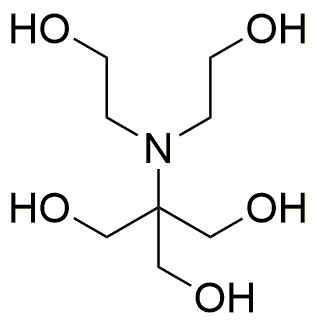Bis-tris is widely utilized in research focused on:
- Biochemical Buffers: Commonly used as a buffering agent in biological and biochemical experiments, it helps maintain pH stability in various solutions, which is crucial for enzyme activity and protein stability.
- Cell Culture Media: Essential in formulating cell culture media, it supports the growth of various cell types by providing an optimal environment, making it invaluable in pharmaceutical and biotechnology industries.
- Electrophoresis: Frequently employed in electrophoresis applications, it aids in the separation of biomolecules, such as proteins and nucleic acids, allowing researchers to analyze complex mixtures effectively.
- Protein Purification: Used in affinity chromatography, it enhances the purification process of proteins, ensuring high yield and purity, which is vital for drug development and research.
- Pharmaceutical Formulations: Incorporated into various pharmaceutical formulations, it helps stabilize active ingredients, improving the efficacy and shelf-life of medications.
General Information
Properties
Safety and Regulations
Applications
Bis-tris is widely utilized in research focused on:
- Biochemical Buffers: Commonly used as a buffering agent in biological and biochemical experiments, it helps maintain pH stability in various solutions, which is crucial for enzyme activity and protein stability.
- Cell Culture Media: Essential in formulating cell culture media, it supports the growth of various cell types by providing an optimal environment, making it invaluable in pharmaceutical and biotechnology industries.
- Electrophoresis: Frequently employed in electrophoresis applications, it aids in the separation of biomolecules, such as proteins and nucleic acids, allowing researchers to analyze complex mixtures effectively.
- Protein Purification: Used in affinity chromatography, it enhances the purification process of proteins, ensuring high yield and purity, which is vital for drug development and research.
- Pharmaceutical Formulations: Incorporated into various pharmaceutical formulations, it helps stabilize active ingredients, improving the efficacy and shelf-life of medications.
Documents
Safety Data Sheets (SDS)
The SDS provides comprehensive safety information on handling, storage, and disposal of the product.
Product Specification (PS)
The PS provides a comprehensive breakdown of the product’s properties, including chemical composition, physical state, purity, and storage requirements. It also details acceptable quality ranges and the product's intended applications.
Certificates of Analysis (COA)
Search for Certificates of Analysis (COA) by entering the products Lot Number. Lot and Batch Numbers can be found on a product’s label following the words ‘Lot’ or ‘Batch’.
Numéro de catalogue
Numéro de lot/série
Certificates Of Origin (COO)
This COO confirms the country where the product was manufactured, and also details the materials and components used in it and whether it is derived from natural, synthetic, or other specific sources. This certificate may be required for customs, trade, and regulatory compliance.
Numéro de catalogue
Numéro de lot/série
Safety Data Sheets (SDS)
The SDS provides comprehensive safety information on handling, storage, and disposal of the product.
DownloadProduct Specification (PS)
The PS provides a comprehensive breakdown of the product’s properties, including chemical composition, physical state, purity, and storage requirements. It also details acceptable quality ranges and the product's intended applications.
DownloadCertificates of Analysis (COA)
Search for Certificates of Analysis (COA) by entering the products Lot Number. Lot and Batch Numbers can be found on a product’s label following the words ‘Lot’ or ‘Batch’.
Numéro de catalogue
Numéro de lot/série
Certificates Of Origin (COO)
This COO confirms the country where the product was manufactured, and also details the materials and components used in it and whether it is derived from natural, synthetic, or other specific sources. This certificate may be required for customs, trade, and regulatory compliance.


